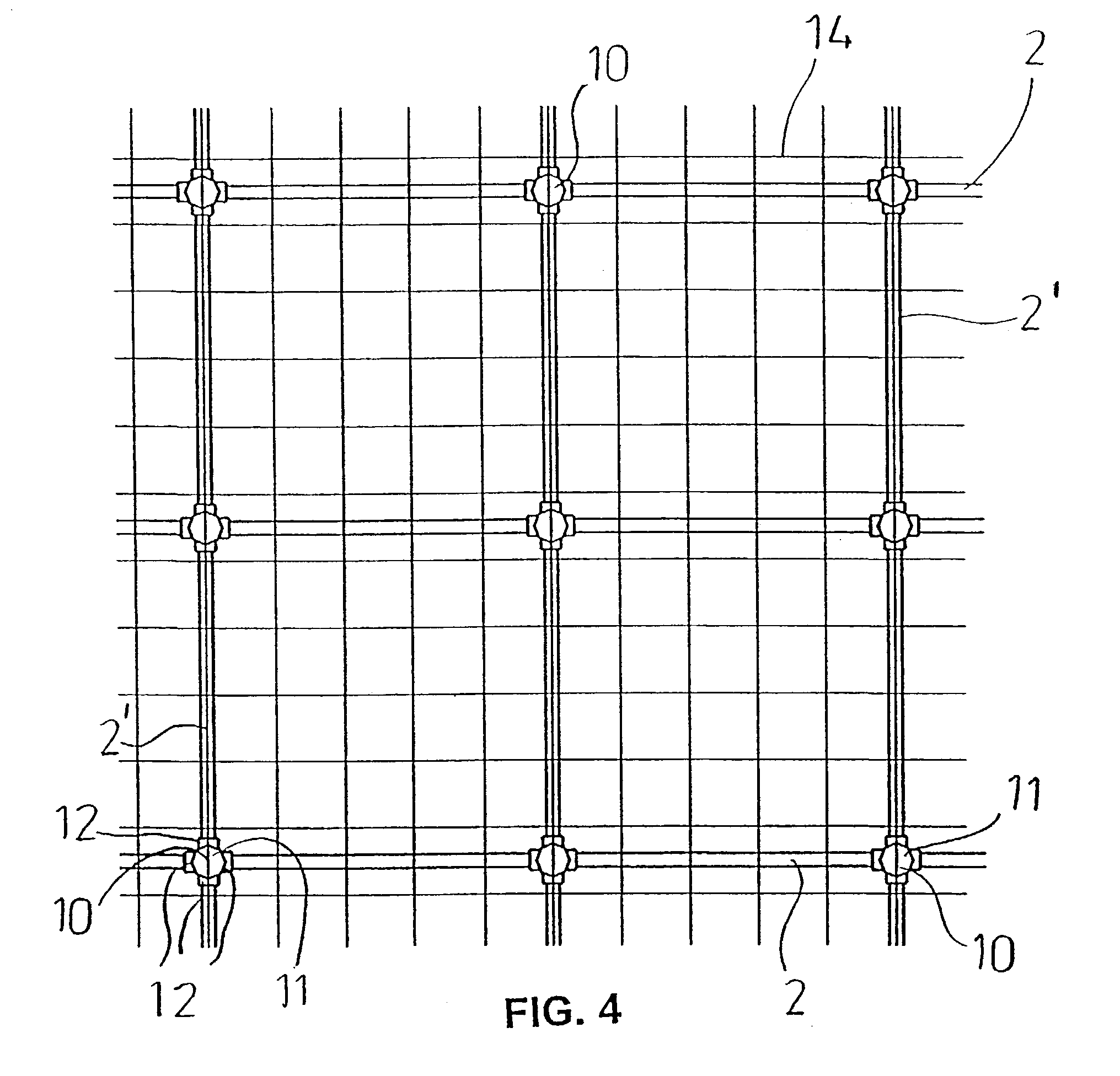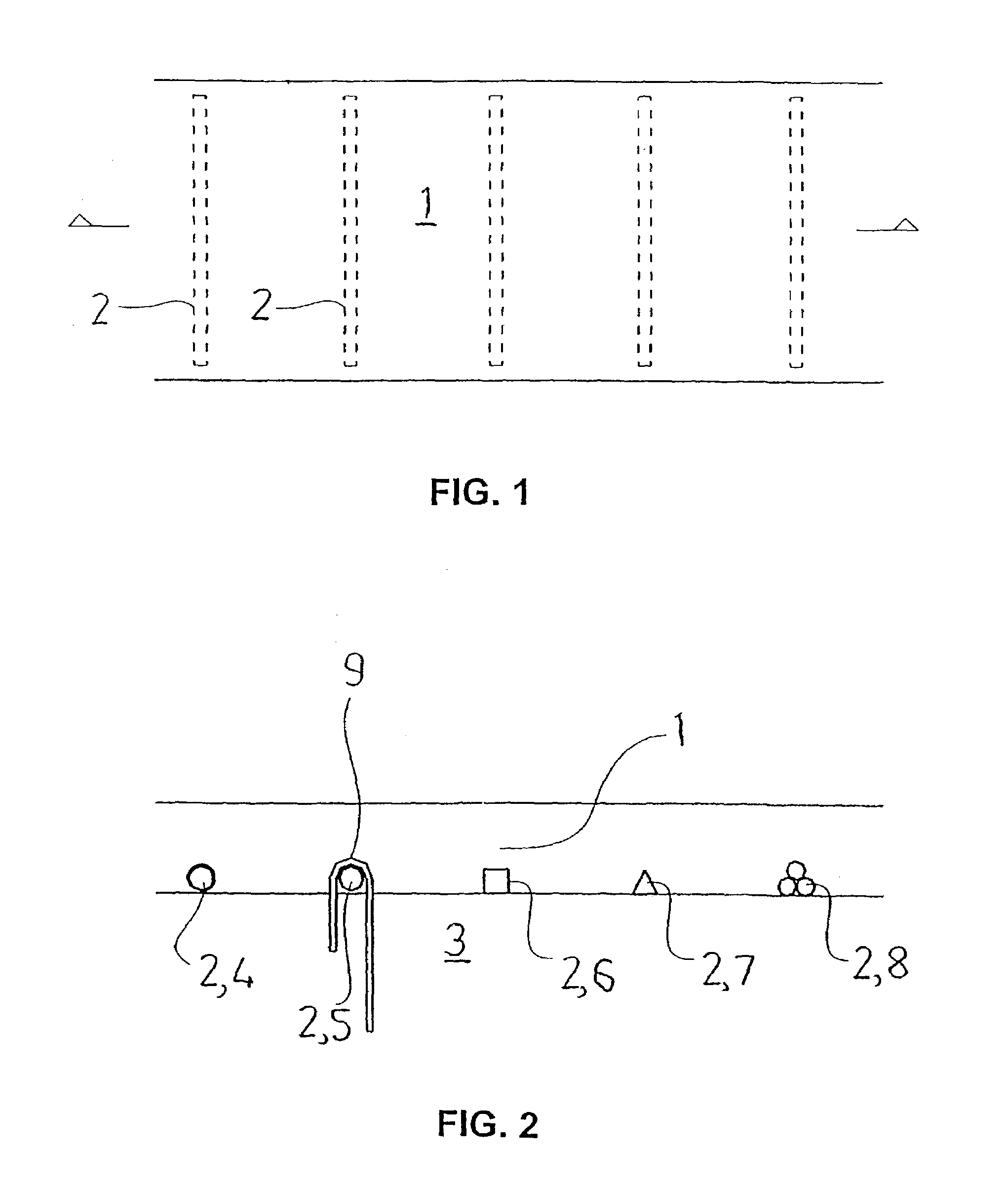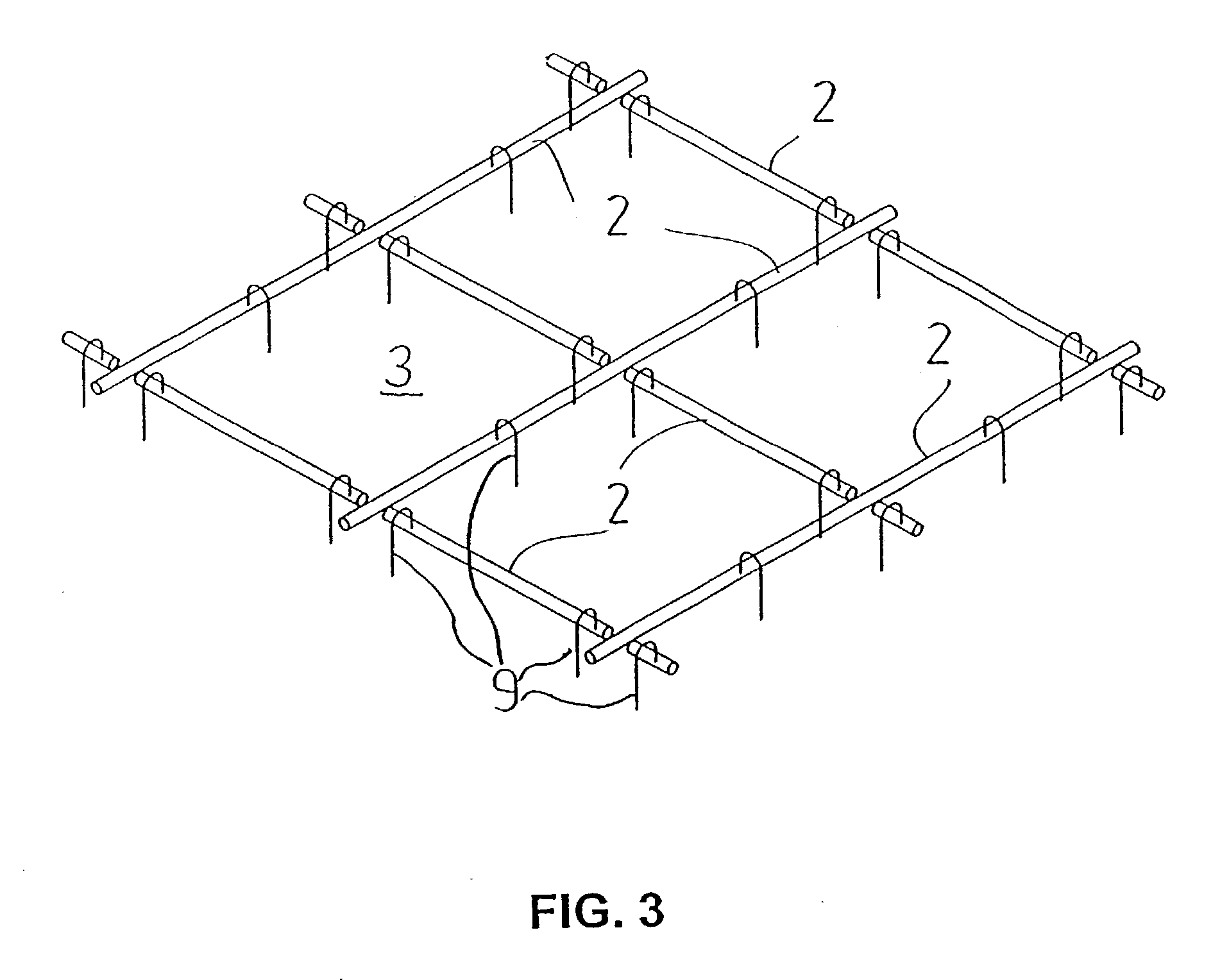Method and system for constructing large, continuous, concrete slabs
a technology of continuous concrete and construction method, which is applied in the direction of paving reinforcement, building repair, etc., can solve the problems of large concrete slab, visible cracks in concrete slabs and pavements, and continuous pavements such as concrete roadways and paths that will crack,
- Summary
- Abstract
- Description
- Claims
- Application Information
AI Technical Summary
Benefits of technology
Problems solved by technology
Method used
Image
Examples
example
[0084]A specific example of slab construction will now be described. The crack inducer system has been used to construct a 4,042 square meter floor area for a supermarket, without control joints. The slab was 125 mm thick throughout and was reinforced with F62 mesh placed with about 30 mm top cover. A grid of crack inducers was used to induce closely spaced fine cracks throughout the area of the slab. The crack inducer grid comprised 33 mm diameter PVC pipes at 1 m centers in both x and y planar directions, the diameter of the pipes being approximately 25% of the thickness of the slab. Four-way connectors were used to connect the crack inducers and to provide a surface at 70 mm above the concrete-pouring surface to support the reinforcing mesh. The slab extended throughout the entire area of the supermarket, including the trading area, the cool rooms, the food preparation areas, and the reserves area.
[0085]Some of the advantages of the system for constructing slabs on grade can be s...
PUM
| Property | Measurement | Unit |
|---|---|---|
| Length | aaaaa | aaaaa |
| Length | aaaaa | aaaaa |
| Length | aaaaa | aaaaa |
Abstract
Description
Claims
Application Information
 Login to View More
Login to View More - R&D
- Intellectual Property
- Life Sciences
- Materials
- Tech Scout
- Unparalleled Data Quality
- Higher Quality Content
- 60% Fewer Hallucinations
Browse by: Latest US Patents, China's latest patents, Technical Efficacy Thesaurus, Application Domain, Technology Topic, Popular Technical Reports.
© 2025 PatSnap. All rights reserved.Legal|Privacy policy|Modern Slavery Act Transparency Statement|Sitemap|About US| Contact US: help@patsnap.com



